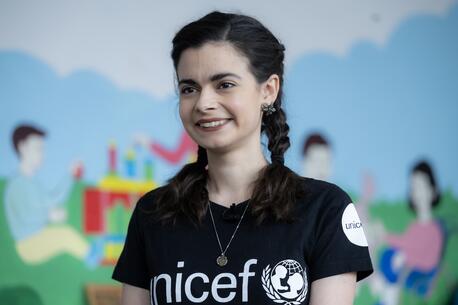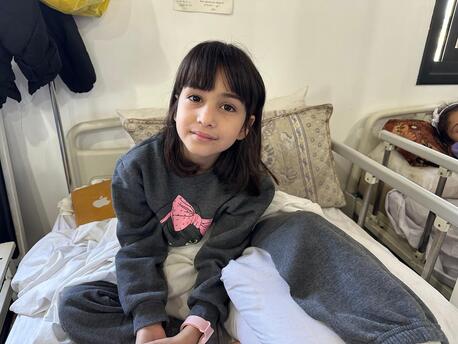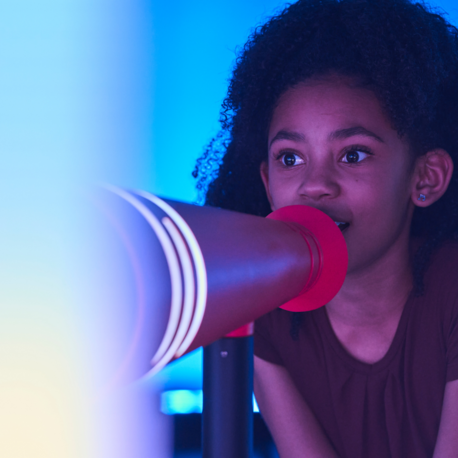Witnessing UNICEF’s work in Ecuador
From the moment our plane touched down in Quito, Ecuador, I was impressed by the natural beauty of this country. Ecuador is considered to be an upper-middle-income country, based on gross national income per capita. However, like in many countries, there are two very different realities for Ecuador's citizens. The lowest fifth of the population, based on income, is very poor, and is comprised mostly of indigenous people. Even though the constitution guarantees equal rights for all, poverty and child development issues have hit indigenous Ecuadorians particularly hard.
Bentley Long isa U.S. Fund for UNICEF Southeast Regional Board Member.
From the moment our plane touched down in Quito, Ecuador, I was impressed by the natural beauty of this country. I wondered why this wasn’t a more popular destination for visitors from the U.S.; many know it simply as a stopping-off point on the way to the Galapagos Islands. Ecuador is considered to be an upper-middle-income country, based on gross national income per capita. However, like in many countries, there are two very different realities for Ecuador's citizens. The lowest fifth of the population, based on income, is very poor, and is comprised mostly of indigenous people. Even though the constitution guarantees equal rights for all, poverty and child development issues have hit indigenous Ecuadorians particularly hard.
Poverty rates for indigenous peoples are about twice that of the rest of the population. Approximately 60% live at or below the poverty level, and 30% live at or below extreme poverty levels—on $1.16/day. Indigenous children experience much higher rates of growth stunting due to malnutrition, and their parents are far less likely to register them for social benefits. Children in the lowest income group between the ages of 8 - 15 are three times as likely to work instead of going to school.
Almost 40% of all adolescents in the country do not continue their education past age 14, and this number rises to 80% for the country’s poorest population. Most adolescents discontinue their education for full time work because their families need additional income. Many young mothers leave school to care for their newborn.
Our group witnessed firsthand how UNICEF is working closely with state and local governments to address the inequities faced by children from the poorest families. UNICEF is giving these children and adolescents a voice, advocating with government agencies for the services they need.
Our first visit was to a maternity hospital. Most of the mothers we saw there were between the ages of 13 - 17. I was shocked to learn that some of these mothers were victims of incest, and that their babies had been fathered by relatives. The hospital provided a safe haven for these women, and encouraged all young mothers to register for social benefits.
Later that day, we met with adolescent students at a UNICEF-sponsored accelerated learning school. The school allows students that had previously left high school to complete three years of school in a single year. My 16-year-old daughter was with me on the trip, and she immediately bonded with the students. Through an interpreter, she chatted with girls her own age about school, boys, music, and so on. It was hard to believe that several of the girls she became friends with were mothers of toddlers. Through the learning program, these girls are able make up for the education they missed while they were caring for their newborns.
The next day, we traveled up a mountainous road to an elementary school in the Kayambi Indigenous People Community. Children as young as three walk over one hour each way to and from school. There were 150 children at the school, and one teacher. The state had recently cut funding for breakfast and lunch, replacing it with a snack, so the parents have to take turns preparing meals for the students. When children come to school hungry, their learning comprehension drops dramatically. UNICEF worked with the Kayambi leadership to provide an accurate picture of the conditions that these children face in their school, and this data will be used to advocate for transportation services and additional state-provided nutrition.
During our visit with the Kayambi people, we were accompanied by a beautiful little 9-year-old girl. She was quiet and polite, and had put on her nicest dress to greet us. At the end of the day, while we were spending time with the kids, we gave her some candy. I expected her to quickly gobble up the Reese’s cup like most children do, but she took small bites, savoring every bite. It struck me that this is the way we would all treat food if we didn’t know where our next meal was coming from.
I came away from this trip truly inspired by the UNICEF staff that traveled with us, and by their selfless dedication to bettering the lives of Ecuador’s children. I witnessed the efficiency with which the field office operates, and how UNICEF is uniquely positioned to take a very modest operating budget and significantly improve the quality of life for Ecuador’s poorest children. Everyone that we met in the UNICEF-sponsored programs was so appreciative of how their lives were being improved. This is the type of work that UNICEF does, day in and day out, in over 150 countries. I urge you to give, and give generously, secure in the knowledge that there is no better investment you can make than in the world’s children.




